
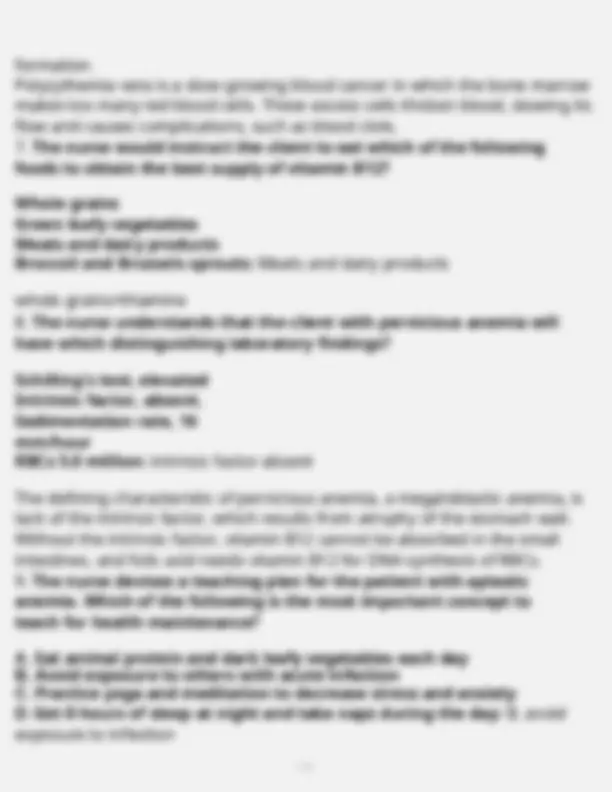
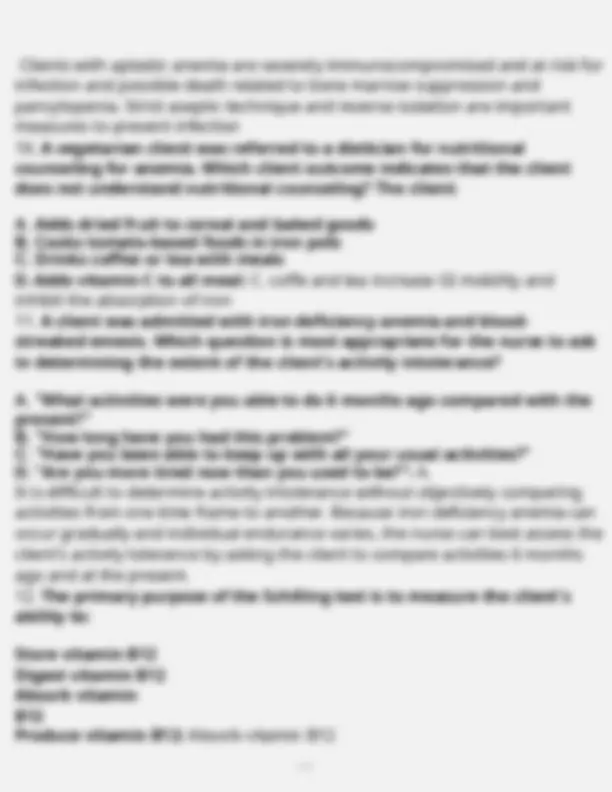
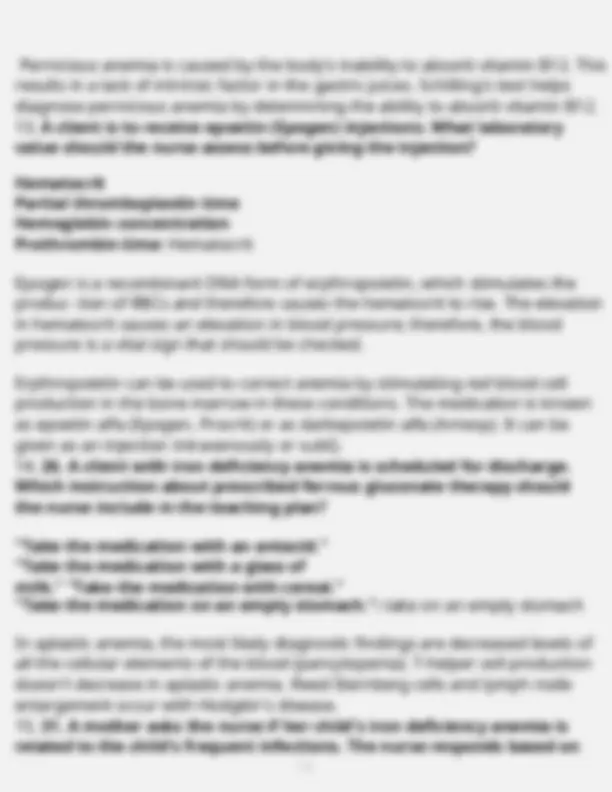
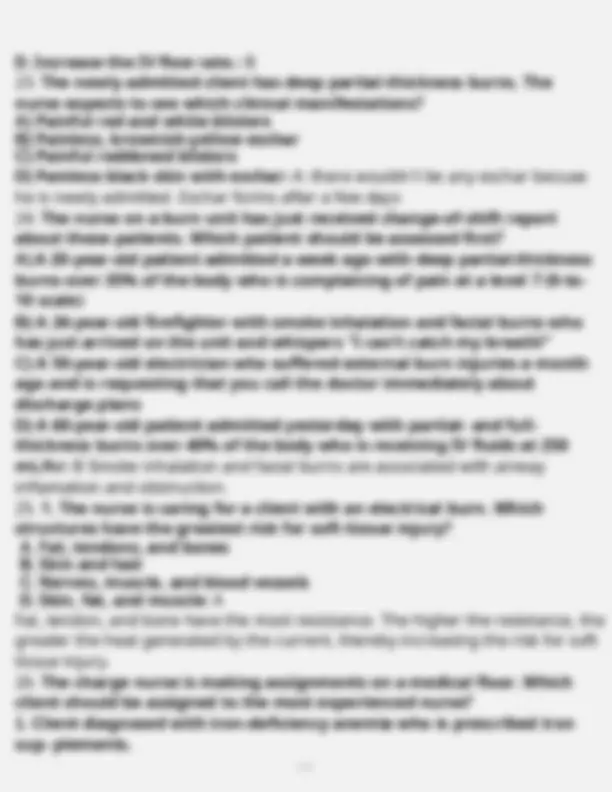
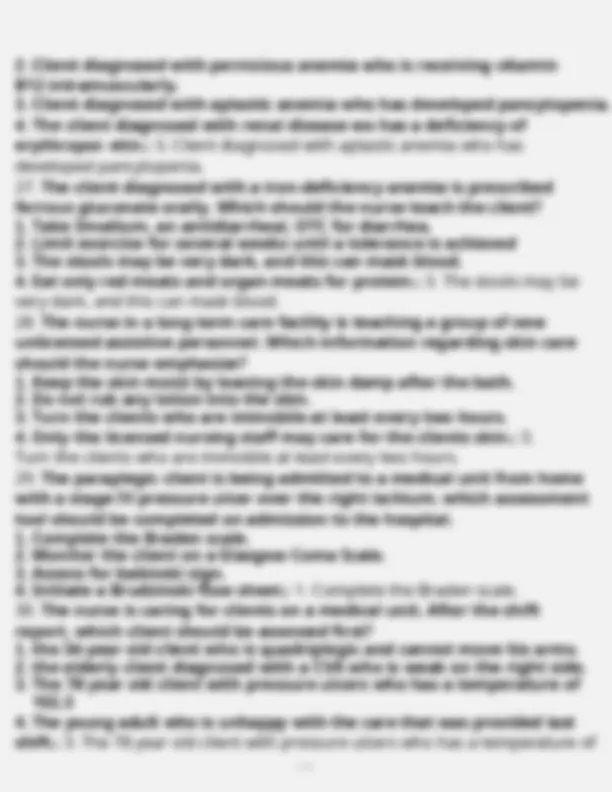
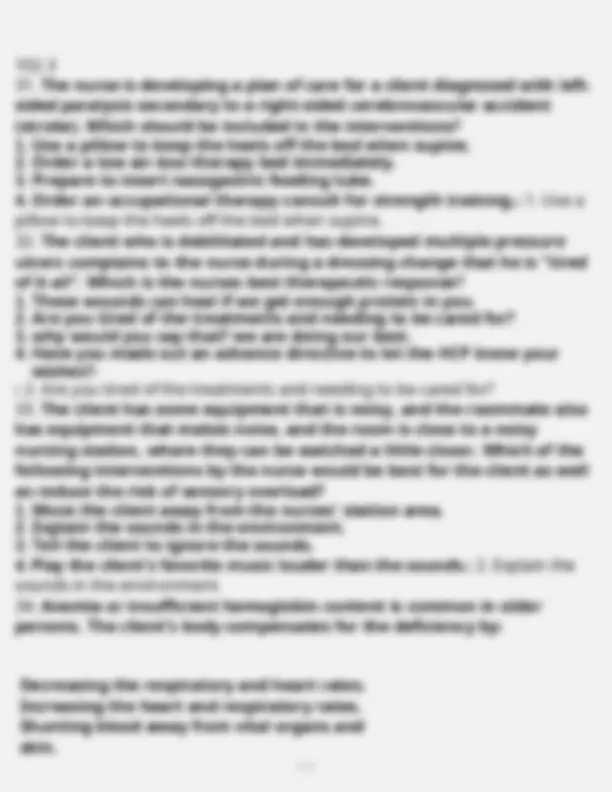
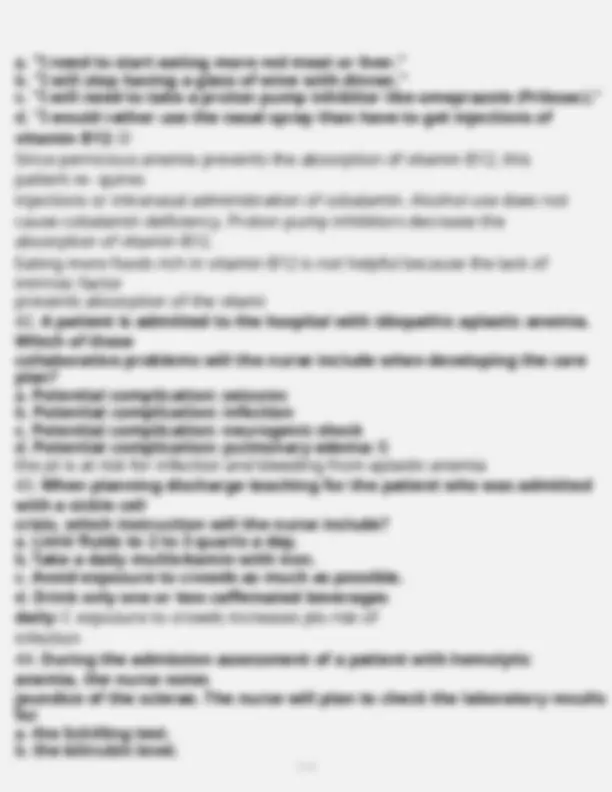
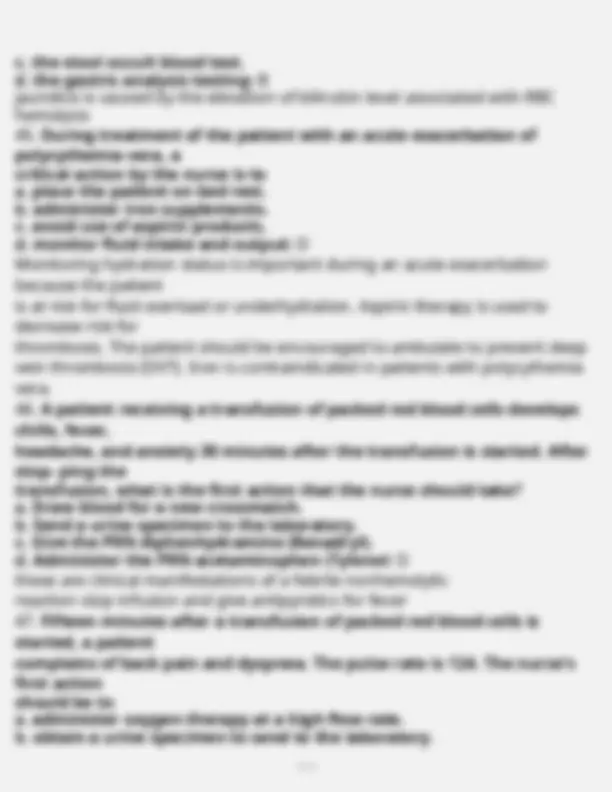
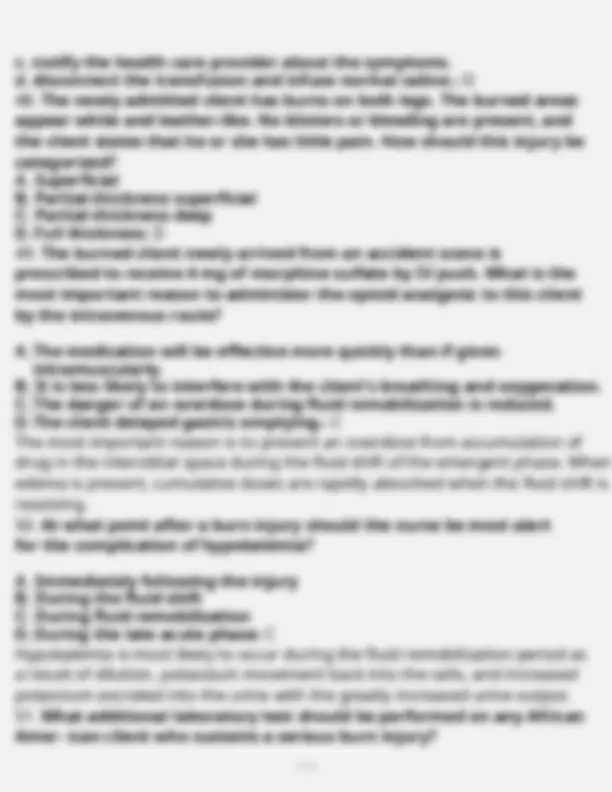
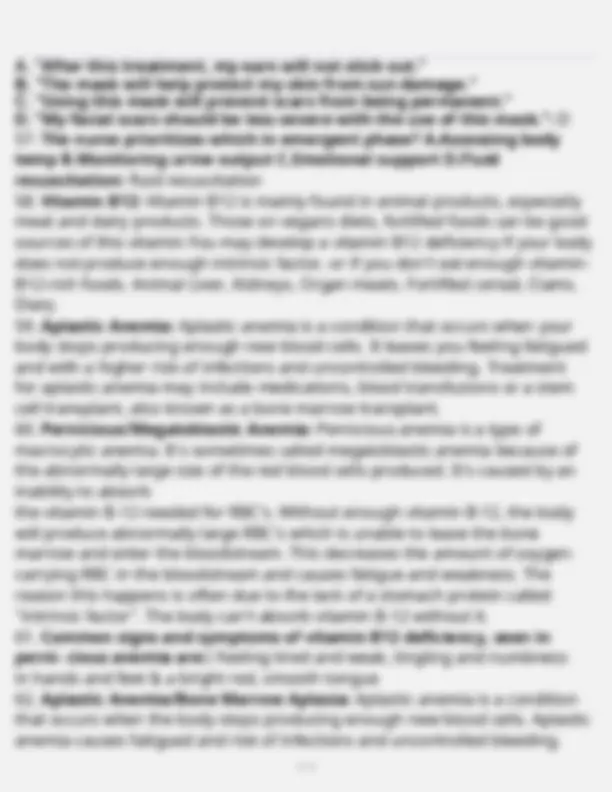
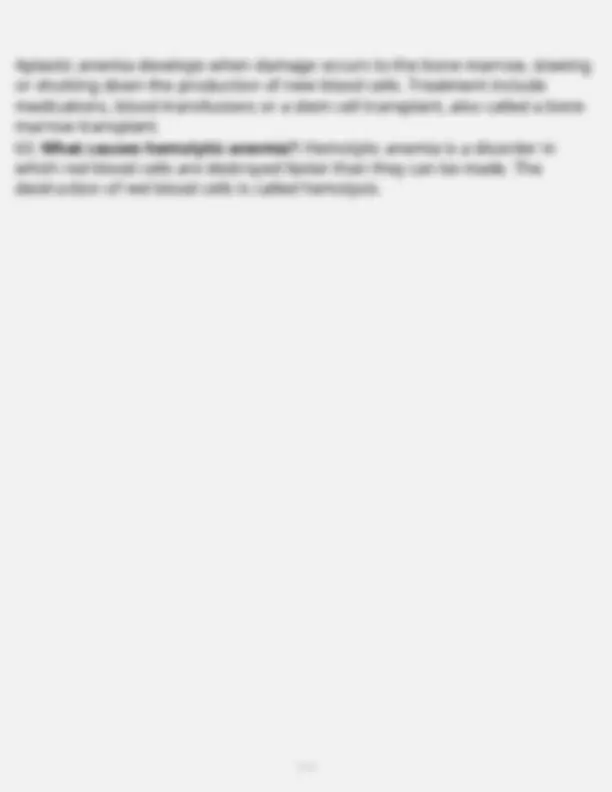
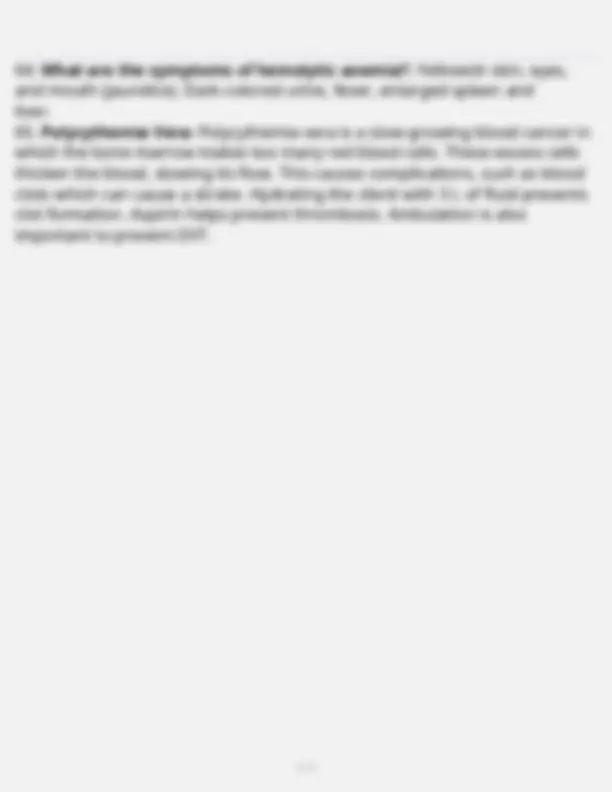


Study with the several resources on Docsity

Earn points by helping other students or get them with a premium plan


Prepare for your exams
Study with the several resources on Docsity

Earn points to download
Earn points by helping other students or get them with a premium plan
Community
Ask the community for help and clear up your study doubts
Discover the best universities in your country according to Docsity users
Free resources
Download our free guides on studying techniques, anxiety management strategies, and thesis advice from Docsity tutors
Anemia NCLEX Practice questions latest download with answers updated version[2024-2025]
Typology: Exams
1 / 20

This page cannot be seen from the preview
Don't miss anything!













Clients with aplastic anemia are severely immunocompromised and at risk for infection and possible death related to bone marrow suppression and pancytopenia. Strict aseptic technique and reverse isolation are important measures to prevent infection
Pernicious anemia is caused by the body's inability to absorb vitamin B12. This results in a lack of intrinsic factor in the gastric juices. Schilling's test helps diagnose pernicious anemia by determining the ability to absorb vitamin B12.
arm. The burned area appears red, has blisters, and is very painful. How should this injury be categorized? A. Superficial B. Partial-thickness superficial C. Partial-thickness deep D. Full thickness: B
D. Increase the IV flow rate.: B
Decreasing blood viscosity in order to supply oxygen to hypoxic tissues.: In- crease the Heart & RR all anemias result in loss of Oxygen carrying capacity of the blood and generalized hypoxia. The body compensates for this by raising HR and RR
a. "I need to start eating more red meat or liver." b. "I will stop having a glass of wine with dinner." c. "I will need to take a proton pump inhibitor like omeprazole (Prilosec)." d. "I would rather use the nasal spray than have to get injections of vitamin B12: D Since pernicious anemia prevents the absorption of vitamin B12, this patient re- quires injections or intranasal administration of cobalamin. Alcohol use does not cause cobalamin deficiency. Proton pump inhibitors decrease the absorption of vitamin B12. Eating more foods rich in vitamin B12 is not helpful because the lack of intrinsic factor prevents absorption of the vitami
c. the stool occult blood test. d. the gastric analysis testing: B jaundice is caused by the elevation of bilirubin level associated with RBC hemolysis
A. Total protein B. Tissue type antigens C. Prostate specific antigen D. Hemoglobin S electrophoresi: D sickle cell disease are common among african americans
quad- rants.: C
Aplastic anemia develops when damage occurs to the bone marrow, slowing or shutting down the production of new blood cells. Treatment include medications, blood transfusions or a stem cell transplant, also called a bone marrow transplant.